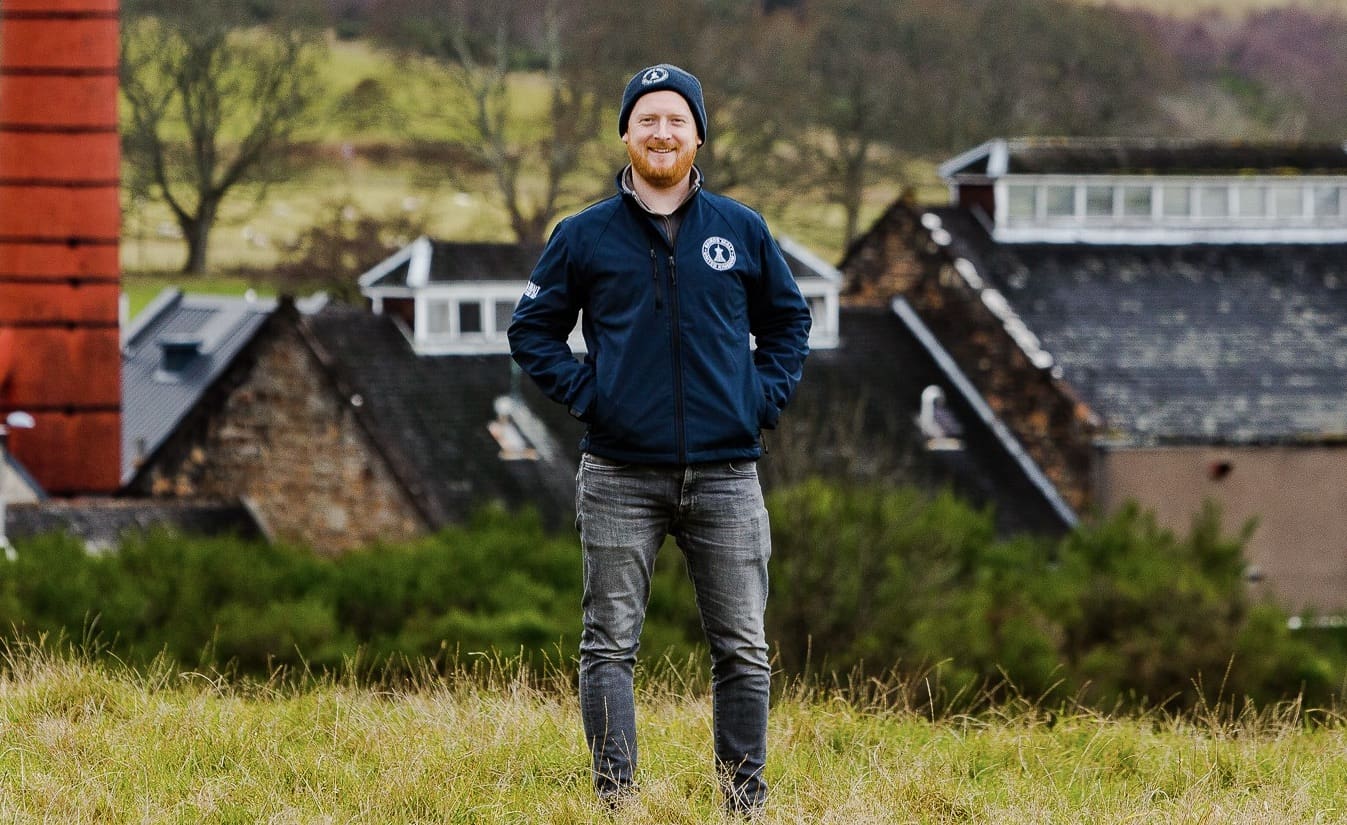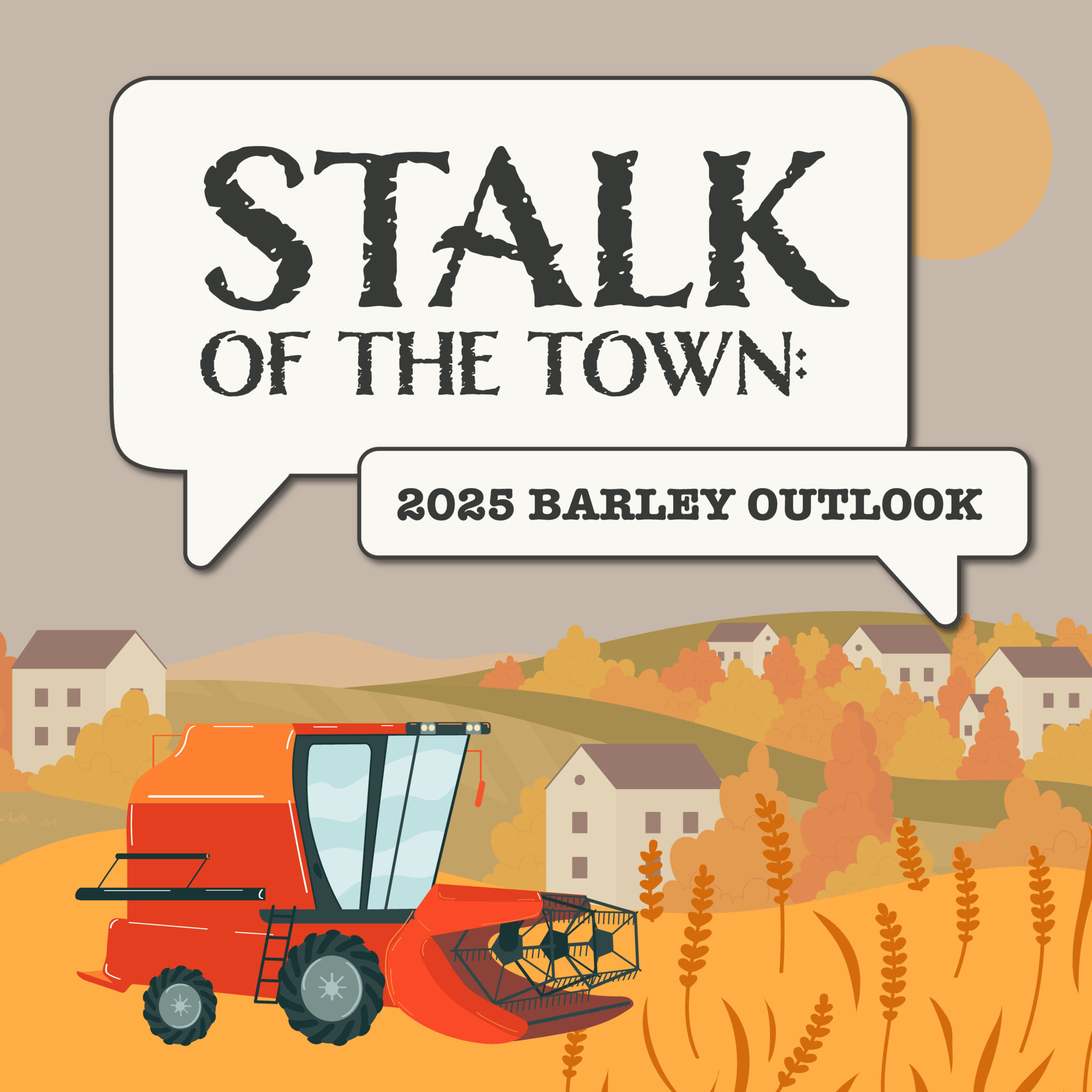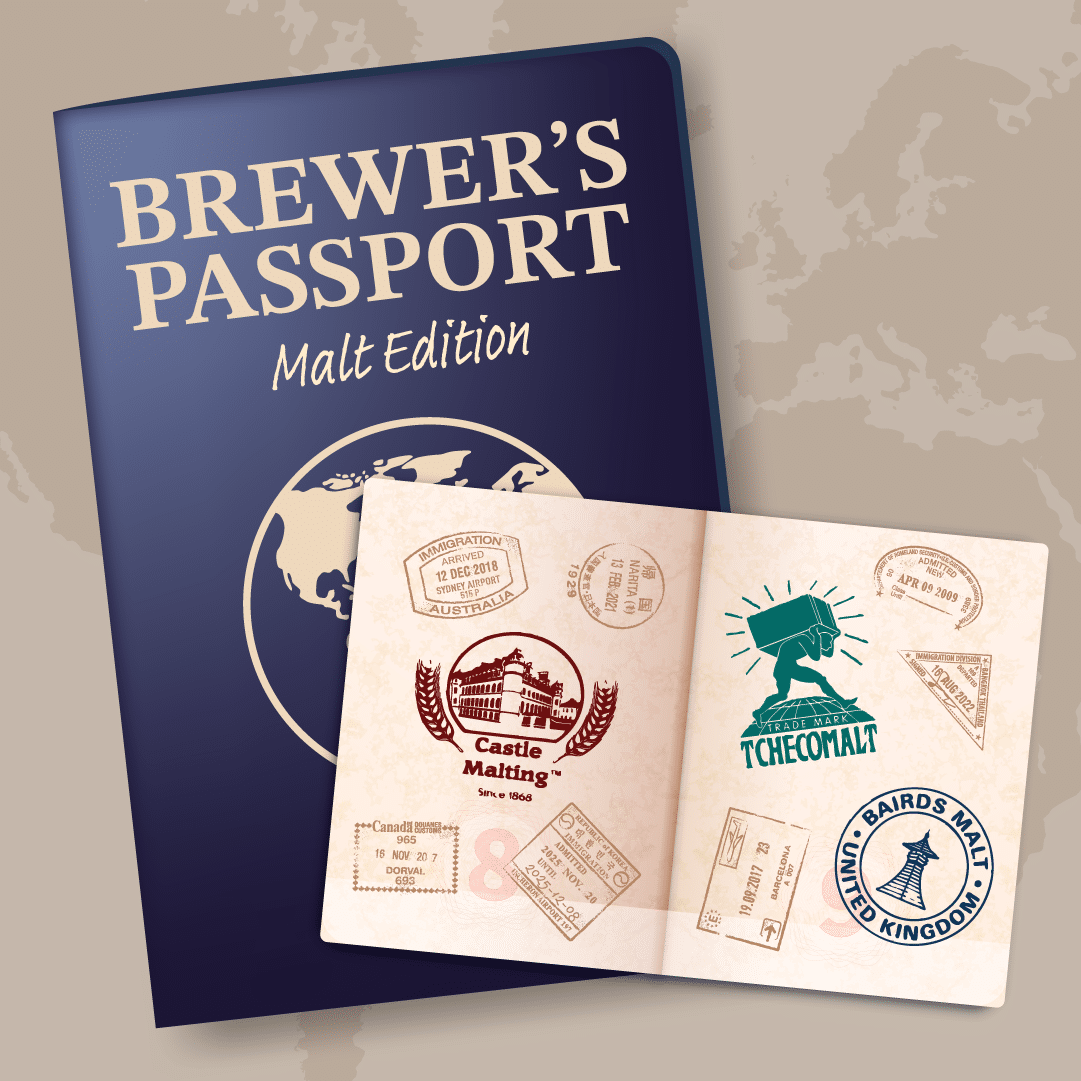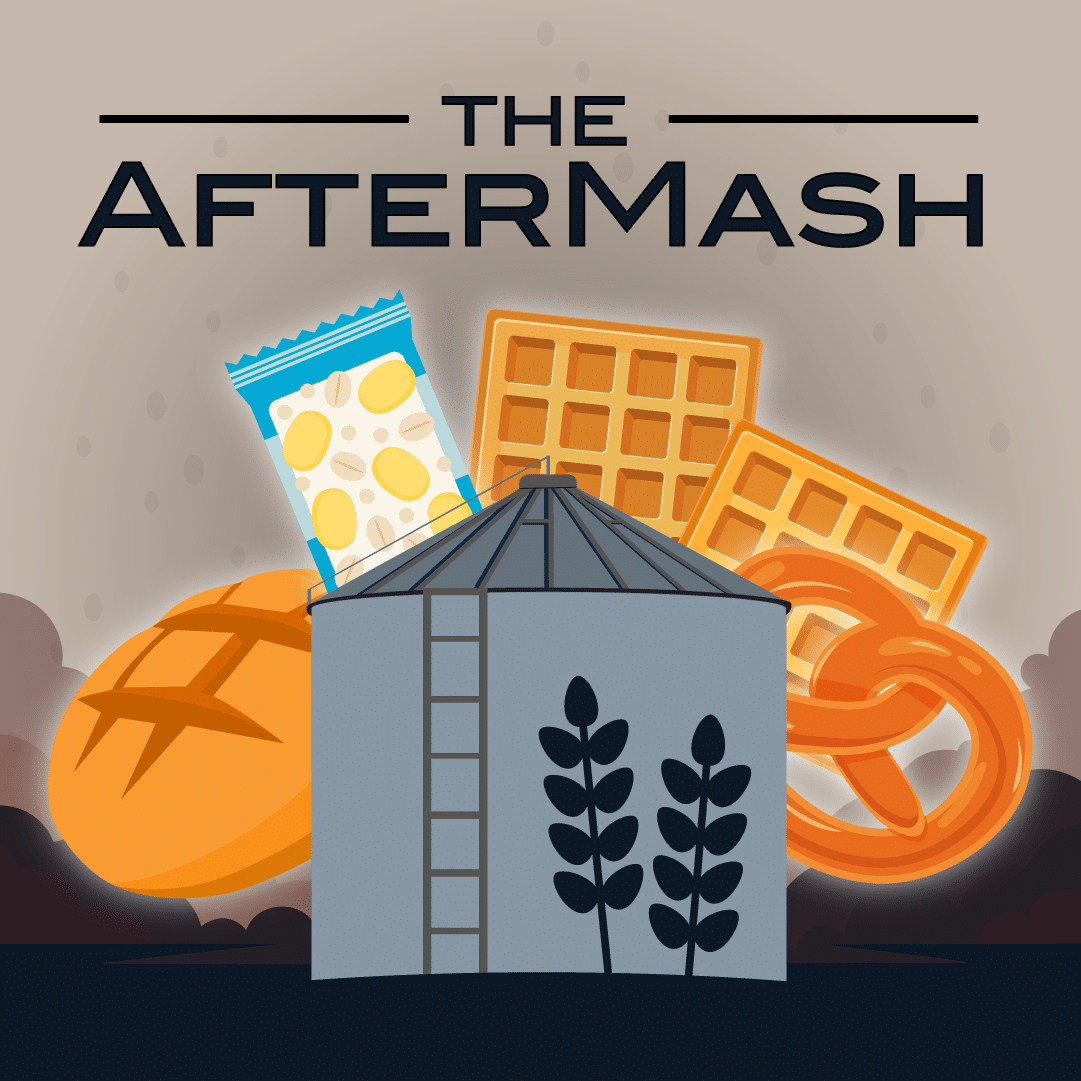
PODCAST GUESTS
Tyler Schoales

Ben O'Gorman

MORE EPISODES
SEASON 3, EPISODE 23: LET’S TALK CROP
PODCAST HOSTS:
GRANT LAWRENCE – TERRITORY MANAGER, COUNTRY MALT GROUP
ABI CONNER – PRODUCT MARKETING MANAGER, COUNTRY MALT GROUP
GUESTS:
TYLER SCHOALES – COMMERCIAL SALES MANAGER, GREAT WESTERN MALTING
BEN O’GORMAN – SALES AND MARKETING MANAGER, BAIRDS MALT
Key Points From This Episode:
- How the 2022 harvest went in North America and the UK.
- How this year’s harvest compares to last year.
- When the malt changes over for bag and bulk.
- What new products were released this year.
- Plus, we check in on the Pink Boots Blend.
Transcript - Let's Talk Crop
EPISODE S.3, E.23
[LET’S TALK CROP]
Grant (00:09):
Happy holidays. This is our last episode of season three. It’s been another awesome year for the Brew Deck podcast. We hit on a lot of topics that are important and that are important to your craft. And we’re just kind of wrapping up the year here and we’re looking forward to season four next year. But we have an awesome episode today. We’re going to be talking about just 2022 crop update. I’ve got two great guests on and I’ve got a new co-host that I’d like to introduce for this one. So her name is Abi Connor. She’s the, she’s country malts new product marketing manager. How’s it going, Abi?
Abi (00:45):
Great. Thanks for having me. I am very excited to be with CMG, looking into product and enjoying getting to know everybody. I come from marketing elsewhere and I.
Grant (01:01):
Yeah, you’ve got quite the background.
Abi (01:03):
Yeah, definitely. It’s a great industry to be in and I’m really proud to wear a couple different hats here. I also am a brewer at Boathouse Brothers in Pryor Lake, Minnesota. I’ve been doing that for a couple years now and just helping out with the Brew Heart Series. It’s a nonprofit that I helped to start that benefits families who are dealing with childhood illnesses like the one that my sister had and the owner of Boathouse Brothers, his son has as well. So yeah, I’m just really excited to start this new position and just get the ball rolling
Grant (01:44):
For sure. Yeah, it’s good to have a good to have another fellow brewer on as a co-host.
Abi (01:47):
Thank you.
Grant (01:48):
So thanks for helping us out this week.
Abi (01:49):
Definitely.
Grant (01:50):
Yeah. So without further ado, we’ll jump into our very special harvest update, jumping into it. Our two guests today, we have Ben O’Gorman. He’s the sales and marketing manager from Bairds Malt coming to us from Edinborough. How’s it going, Ben?
Ben (02:08):
Yeah, all good. Live from snowy Edinburgh today. It’s pretty cold.
Grant (02:13):
Right on. And we’ve also got all the way from the West Coast. We got Tyler Skulls on today. He’s the Commercial Sales and Key Accounts manager for CMG jumping on from Camas right these days. Is that right, Tyler?
Tyler (02:29):
Camas. Yeah. Good old Camas. For those of you that don’t know where it is, it’s right next to Portland and it’s raining here. It’s raining quite a bit here.
Grant (02:37):
Snow and rain, good day to record a podcast. So before we get started, before we jump into kind of the difference between the crop in the UK and the crop in North America in 2022, Ben, Tyler, I kind of want to hear from each of you what’s kind of the difference between UK and North American malt and malting barley from both those places?
Ben (03:01):
Yeah, well I think we probably kind of touched on it at the start. I think probably one of the main things I think is the weather. I think as bad as the weather is over here, particularly in Scotland, it’s actually a great climate for growing kind of molting barley and if you look at where it’s all grown in the UK, it’s all grown down that kind of Eastern seaboard of the UK. And if you look at the footprint of beds, we’ve got three maltings in Scotland and one down in England. And they’re all, again, along that kind of east Eastern seaboard because that’s where we’re all the malting barleys grown. But I don’t know what it’s like for Tyler and you guys in North America, but typically the moistures at harvest are really high.
(03:51)
So the farmers just really want their barley shifted pretty quickly. I think the only kind of exception to that was probably this year. So this was one of the driest harvests that we’ve had and certainly in the time I’ve been working for beds, I’ve been just got to 10 years service for beds. Yeah, yeah. And yeah, in the time that I’ve been doing it, yeah, it’s definitely one of the driest ones we’ve seen, but sure Tyler can tell you what it’s like in North America.
Tyler (04:26):
Sure, yeah, I’d kind of say the same thing and it’s not necessarily a good thing that the harvest was as dry as it was in North America. We seem to be teetering on drought quite consistently these days. But yeah, Ben touched on it. Our growing season is one that varies with the weather. It is a little bit warmer here than it is in the UK. We get a little bit less precipitation than in the UK. So in general the crop here tends to carry with it on average a slightly higher protein content and that’s just because weather drives that protein to form in Canada and the US versus the UK. So I’d say that’s the biggest difference and Ben smacked it right on the head there, just identifying weather as the key parameter that changes the crop from North America to the UK.
Grant (05:27):
Awesome. Well it’s good to have two experts here that have seen many barley harvests. And the point of this episode, the whole reason for it was we just wanted to talk about how the 2022 barley harvest has gone in different regions and kind of give brewers an overview like year over year sort of thing. As we all know, the 2021 crop in North America, so across the US and Canada was kind of challenged and it seems like from what I’m hearing, the parts of Europe had some struggles this year as well. Ben, can you speak about just some of the barley kind of details this year, the plumps, the protein, that sort of thing in the UK?
Ben (06:20):
Yeah, so that overall I think the UK harvest progress in 2022 was earlier than any of the previous five years. So England this year was dry, kind of April, May coupled with high peak temperatures, 30, 35 degrees. And so it was really hot this year compared to kind of previous years. So crops advanced well, were pre precipitation kind of present at key times over that kind of June, July, which is really the kind of green fill periods. And then winter barley harvesting was complete by July and Spring barley harvest was complete over August, so kind of slightly earlier. Then Scotland was dry in April, early June, but kind of lower peak temperatures, it was like 20, 25 degrees from memory and that just meant that the crops progressed slower on the growth cycle. So Scotland kind of experienced a dry period from early August to September, but really what that meant was that we had low nitrogen crops and good ergonomic yields. But one of the biggest kind of things you’ll see in the UK is that 65% of the malt produced is supplied to distillers, which I would’ve thought I was quite different to what Tyler sees in.
Tyler (08:02):
For sure.
Ben (08:03):
In Scotland.
Tyler (08:03):
Good point.
Ben (08:04):
And then in Scotland over 98% of the malt produced is supplied to distillers. So what that kind of means for us is that the barley varieties that are grown, particularly England as well, it’s got to be a dual purpose variety. So it’s got to work for brewers and for distillers. So it’s got to be low protein and it’s got to be a non GN that is really important for distillers and that’s what has massive impact on what the varieties that we picked to grow throughout the seasons.
Abi (08:46):
Great information. Thanks Ben for giving us that overview this year of 2022. Tyler, how are things going in North America?
Tyler (08:57):
Well, I could say that I think we can market in the win category this year as far as awesome 2022 crop is concerned. We actually have a crop to choose from. As everyone knows, 2021 was more than challenged, there was close to 40 some regions, 50% yield reduction coming out of Canada, the US and it was very impactful to the maltsters across the board in North America. Looking at the crop that we got in 2022 growing season going into it, we were drier than normal. That’s the new norm, I guess drought in areas where we wouldn’t have seen drought in the past. However, we did get some pretty timely rains in Canada, the US and the crop progressed fairly well. I’d say it’s a bit more variable than it was previous years with plumps and proteins kind of all over the map in various growing regions where, and the band is maybe a little bit broader than it typically would be, but in general getting a crop out of the ground was a win.
(10:13)
It replenished some of the safety stocks and buffer stocks. But I think knowing what happened in 2021, we’re still going to require a bit more time to get out of this hole that we’re in. From a quality perspective, we see in Canada a range of plumps, anywhere from 50 dismal, 50% plump all the way up to 95 plus percent plump. Protein ranges from 10 to 14% across the board. So quite a bit of variability, but remember that Canada has 10 million metric tons to choose from. So as long as maltsters are able to select accordingly, they’re going to select the higher plump range, 95 plus and the lower protein range, 10 to 11 and a half, call it. In the US. Similar story, we have a wide band of plump and protein content this year. Anything from 30% plump, absolutely dismal for malting quality up to 97, 98% plump protein ranging from eight to 17%.
(11:26)
So the range is quite large in the US as well, even larger than in Canada. And the interesting thing about the US is maltsters going to have to be very, very careful what they select this year because we only have 3.7, 3.8 million metric tons select from in the US and all of it is used for the most part. So we’re just going to have to tread lightly. So across the board, I think it was a win. Again, we have to mark it as a win, but the expectation that protein was going to drop considerably in the US didn’t happen extract similarly, it’s going to hold fairly steady. The one thing I can say is plumps are up in the US and then in Canada there’s a quick recap, extracts most likely going to go up, total proteins most likely going to go down and sizings, plumps are going to go up as well. So in general, weather cooperated, preger, negligible, dawn levels negligible. So it’s looking good.
Grant (12:31):
Right on. Yeah, so I mean you were saying going from 21 to 22 this year was much better. But I think a major takeaway for anyone out there listening is overall supply is still thin and that seems like the barley market’s still pretty volatile and it’s going to take another, at least another one, but likely more than that good above average crop years to get back to where we were before everything in 21. Would you say that’s correct?
Tyler (13:02):
Yeah, I’d definitely say so. I mean that 50% yield drop hit hard and import barley was common for the 2022 brew year for most maltsters. So I think it’s really important to note that this tails quite long and one to two years recovery time is adequate to get us where we need to be, assuming that crop comes off effectively and high yielding in future years.
Ben (13:35):
Yeah, I think we’ve got kind of slightly different challenges in the UK to, sounds like Tyler has in so much as it’s almost not the barley yields have been the biggest challenge, but it’s actually just to produce enough malt in the UK to meet our demand. We’re a small island but we have a lot of maltings on the island, but the distillers continue to just increase their demand for malt and the malting industry has found its best to keep up, hence why we’re currently building a new maltings at the moment and that’s kind of going somewhere to keeping up. But that’s one of the biggest biggest challenges we had. So we had to go out this year and get an additional thing a hundred thousand tons of barley just to meet the demand of our new maltings coming on online. But that is one of the biggest challenges we have is trying to keep up with the distillers.
Grant (14:46):
I think that’s, that’s an excellent point. I don’t think that, for example, craft brewers here in the US I don’t think they realize that the UK basically consumes everything they make almost like is that, what would you say that’s correct, Ben? It’s really like, supply wise there’s not like excess really. Not currently.
Ben (15:10):
No, no, no, not at all. No. So we did, I think it was 2021, we actually brought, we’ve as part of Project Angel as we kind of nicknamed it in internally, that was a project we embarked on just to increase our malting capacity in Scotland. So Jan 21, we increased our production capacity to 22,000, sorry, by 22,000 [inaudible 00:15:39] our growth facility. And then the other kind of big project was building an entirely new maltings on the footprint of our existing [inaudible 00:15:50] facility. And that’s going to increase capacity by another 57,000 ton and still we’ve a lot of additional malt [inaudible 00:16:01] that we’re bringing on board next year, but still it’ll be a deficit and it’s up to us to really bridge that gap. And we did, back in 2010, we built a new maltings in our new clover plant and 10 years on we’re building a new one. So the only maltings in the UK to actually do that kind of twice in a decade, which is, yeah, it’s pretty mad.
Grant (16:30):
Truly impressive. Yeah, that’s awesome. Well good. Sounds like there’ll be a little bit more to go around once the new maltings come online, but for the time being it’s a little tight.
Ben (16:42):
Yeah, yeah.
Abi (16:43):
With that being said, as far as not so much distilling but with this new crop of malt, when does that change over in bulk and bag? When are we going to start seeing the 2022 crop?
Tyler (17:00):
Geez, I think, well it’s already begun. It’s more than begun. It’s done in North America. I’d say we, knowing what everybody knows now, 2021 crop bean, as devastated as it was, we were essentially buying barley in 2022 for about 15 months of coverage. So we were dipping into Winter’s as they were coming off the fields and we were anticipating the Spring’s coming off in preparation to get that on the blend as soon as possible. So if I had to put a date on it, I’d say in Canada we were transitioning end of August, beginning of September for most maltsters. And the duration of that transition was approximately one month, zero to a hundred percent. In the US, we started transitioning kind of into September and a month, month and a half later we were at a hundred percent new crop as well. So the duration was shorter, we were crunched for time, we needed that barley to come off the fields, we needed it really badly. We got it went into the blend almost immediately thereafter. So the transition’s done and we’re looking forward to this year as things settle out.
Grant (18:22):
Yeah, I think that’s an interesting point. So maltsters or people that are buying barley with the challenge 21 crop, they weren’t going to take any chances on being long on it or having excess. It was very much like Tyler was saying, it sounds like it was just as soon as we could wrap that up and use the fresh harvest, that was better. That sounds like what great Western Canada malting and just North American malters in general were trying to do.
Tyler (18:54):
Yeah, I’d say so mean. Yeah, we were in trouble. If the crop did not come off the way it came off, there was going to be some trouble and maltsters were going to have to outsource barley once again. So it was really key. It was vital. There was a lot of individuals hoping
Grant (19:15):
On nail biting.
Tyler (19:16):
Yeah, nail biting. Yeah, that’s one way of putting it. There was a lot of people that were scared to death that this crop wasn’t going to come off. It did successfully, in good yield and pretty good quality across the board and we’re happy that it did because we were in desperate need of it.
Grant (19:36):
So in years past, I’ve always seen the previous crop kind of feather into the new crop, but this change this year is pretty abrupt. And from what you’re describing, it really is for the better. I’m going to ask this question to both of you, but Tyler, with what would you recommend milling wise for brewers that are transitioning new crop, what would you say?
Tyler (20:05):
Well, I would say look at your COAs to start. Yeah, I think that’s actually read the COA. That would be really good to do.
Grant (20:11):
Actually read the COA.
Tyler (20:15):
Yeah, I think it’s a great idea. If you do that and you see the trending of the plumps going up, which it most likely will be from most maltsters, then I would open up your gaps a little bit and not crush so finely, because you’re going to get flour with a lot of the larger kernels that are coming through this year. From a quality perspective, kind of a mixed bag. I think Canada, you’re probably going to see a slight dip in protein. Like I said, a slight uptick in extract. The US will probably be pretty similar to the previous year, aside from plumps. I think plumps are, they’re on the up. So again, mill gap settings are very, very important. But follow that COA guys, I can’t stress it enough.
Grant (21:00):
Yeah, read the [inaudible 00:21:01].
Tyler (21:01):
Read. Yeah, read the fine print of the COA and trend the parameters that mean the most to you at your brewery and nobody could tell you what those are, whether they’re [inaudible 00:21:11], friability, protein content, alpha-amylase, DP, whatever they are that affect your brewery the most, you should be tracking and trending those and adjusting your process accordingly.
Grant (21:23):
For sure. Yeah, I guess it’s kind of counterintuitive, but you know, you do need to back, it’s like with higher plumps, right? And lower pro, you need to back off your mill a little bit or you’re going to cause channeling in your lauder ton and not get the most from it that you would. I know a lot of brewers are like how could grinding finer decrease my extract? But it’s because you’re going to cost channeling, so pay attention to your , and do some zip tests.
Ben (21:56):
Couldn’t agree more with that. I think the amount of breweries have been into before when you have that kind of new crop change and people don’t spend the time just to look at the COA and adjust the mill setting accordingly. So yeah, I couldn’t agree more. Tyler,
Grant (22:14):
What, Ben year over year, the great thing about UK barley versus North America is how consistent it is, or at least generally, what would you say
Ben (22:27):
Well, I feel sorry for Tyler, listen to all that. I think Tyler, we need to get you back to the UK. Yeah, I think kind of jokes aside, I think we’ve listened to Tyler, we have had an easier time of it. I think one of the biggest challenges we’ve had in the UK is just the economic challenges at [inaudible 00:22:55] and particularly how that’s impacted energy, cost of energy, so the cost of producing a ton of malt, I think trying to deal with that as a business as quickly as it was changing throughout this year was just absolutely mad. And that’s had a massive impact on pricing for next year. So in some ways the fact that we had as easier a time with the malt as we did harvest was a bit earlier, but we could deal with that, that’s not a problem. So we were okay with that and the qualities comparable to previous crop years, so that’s okay. But yeah, it was really just that ever-changing kind of economic kind of scene in the background that was probably giving everyone the biggest headache I think.
Grant (23:52):
For sure.
Tyler (23:52):
Yeah, you can’t forget the elephant in the room, right? The elephant in the room is the global markets were pretty heavily impacted by the [inaudible 00:24:00] as well. So taking that into consideration and everything going on in the barley growing world, it was a very, it was rollercoaster ride to say the least and it continues to be. The markets are extremely volatile still and we’re not expecting that to go away anytime soon.
Abi (24:22):
Definitely a challenge for sure. Kind of pivoting a little bit, but Ben do you want to tell us a little bit about what’s going on with peated malt right now?
Ben (24:32):
Yeah, peated. So I’ve actually just got back from Isla believe it or not, so for those of you guys who don’t know, that’s a little island off the west coast of Scotland and it’s got the highest concentration of distilleries, I think it is in Europe. So I think they might even be up to, I might be making this up and it might be up to 12 distilleries. I [inaudible 00:24:56]. Yeah, so they had the weather there, they had a particularly wet season, so extracting peat over there was a challenge. And also the other kind of flip side to peated as well was it’s kind of tracking the same way that the distilling market is, that everyone’s demand is just ramping up and as maltsters, we just need, we’re struggling to keep up with that demand. So I think the kind of message there is that it’s going to be particularly difficult I think in going forwards with just that there’s not enough peat, peated malt to go around to meet that demand.
Grant (25:42):
It’s such a niche ingredient that only comes from one little pocket of the world really. So it just sounds like with demand growing, there’s it, there’s just not enough supply to go around lately.
Ben (25:58):
Yeah, and chatting to some distillers, I think they just see the demand for their peated whiskey, it just continues to grow. And as a maltster trying to pivot and react to that is, can be quite challenging sometimes, especially particularly with peated malt. So we’re trying our best. But yeah, I think that the messages to your customers is certainly for 2023, it’s, yeah, it’s
Grant (26:31):
Forecast for in secure your peated malt, like now.
Abi (26:35):
Yeah, definitely. Speaking of distilling malts, Tyler, I hear that Great Western introduced two new distillers malts this year.
Tyler (26:43):
Yeah, they’ve been in the mix for a little while now. There’s been a lot of talk on this podcast about distilling and most of it has been centered around the UK and the growing market there and the demand, but we’re seeing a lot of the same in North America. Distilling has picked up quite a bit and we’re about to receive a new category if all goes well within the US here very shortly, American single malt whiskey with the TTB, and I expect that to just create a lot of great opportunities for the distillers here in North America in general. So distilling is up and coming, it’s already there, but it’s continuing to grow and Great Western was able to secure some low GN barley similar to what is produced in the UK and make some great [inaudible 00:27:43] malt out of it.
(27:44)
And of course we have our high enzymatic kind of malt as well to break down any adjuncts that are used in
Abi (27:55):
Bourbon.
Tyler (27:56):
Distilling outside of all malt single whiskey. So it’s looking great and those products are great, they’re excellent for the distilling industry as a whole. And Canada’s the same thing. We do have some great products out of Canada as well, so it’s picking up, maltsters are aware and they’re in creation mode r&d mode to capture that and support the distillery market in North America for sure.
Grant (28:28):
Yeah, we’ve been hearing that again and again. Just last week, one of our guests on for our brewing, like brewstillery episode right? He was talking heavy about American single malt and it kind of being a new frontier for craft spirit makers here in the US.
Tyler (28:49):
Yeah, for sure. And some of the guidelines, the guardrails for that category are a little bit broader than that of UK, Scottish whiskey, scotch. So it creates the opportunity for brew distilleries or brewstilleries or distilleries to really flex their creative muscles, and create something really, really unique for the consumer in North America and the rest of the world when it starts getting distributed. So everyone’s really excited. This is a long time coming and the market’s going to see the creative genius of North America from a whiskey standpoint very, very soon.
Grant (29:40):
Speaking of Canada Maltings new products, we’ve talked about it a little on the show before, Tyler, but while I’ve got you here, could I get you to touch on Euro pils and where you see that going for 2023, the under modified pils malt that Canada Malting released?
Tyler (30:01):
Euro pils is near and dear to me specifically, it’s a wonderful, wonderful product. It’s a continental European style pils malt. Grant, you hit it right on the head, it’s under modified. Beta-glucans up in the 130, 140 range, 150 range, just giving this really, really nice malt stream that brewers are starting to use. It’s picking up steam. A lot of brewers have accepted it into their malt portfolios already. It was just released a couple of months ago as well.
(30:40)
So we’re looking forward to it. Flavor profile, table cracker, bready, doughy, hints of grass, grass like notes. I think one of the coolest things about this malt is because it’s under modified and it’s got that beta-glucan hit and that viscous kind of a feel to it, it does provide great body and wonderful head retention. I can’t say that enough. I think it’s magnificent in that category and flavor profile wise, it’s right on point. It’s going to surprise a lot of brewers. I think those that want to try it should get out there and try it. It’s a great, great product with tight, tight quality parameters that we intend to hold as long as we can and it’s made from an import barley stream. So I think that’s really important as well. It’s, it ticks all the boxes guys and I think people are going to be surprised.
Grant (31:45):
Absolutely. All right, well starting next season, we’re going to do a new segment on this show and that’s one of the reasons why I wanted to have Abi co-host this episode with me today. We’re going to call it Ask Abi, and we’re going to answer all of our listeners burning questions, whether it’s Instagram or emailed in that sort of thing. Abi, can you want to tell us a little bit about your plans for that?
Abi (32:09):
Yeah, definitely. In any avenue, if you have any questions about product, what you want to see, products that we have, new products that have come out, even technical questions about our products, just sling them our way and I will do my best to answer them.
Grant (32:27):
I’m looking forward to that. It’s going to be fun.
Abi (32:29):
Yeah, it’s going to be fun. I’m excited.
Grant (32:31):
So yeah, just email your questions to us at thebrewdeck@countrymalt.com and Abi will be here to answer them. So Tyler, Ben, I really appreciate you coming on and talking about the barley stream for 2023. I hope brewers gleaned some useful information out of it and yeah, just really love having y’all on the show. It’s nice to connect and have Scotland and the West Coast and Central and just all of us on together. It’s been great.
Ben (33:02):
Thanks for having us. Yeah, looking forward to seeing you in Nashville.
Grant (33:05):
Oh, can’t wait. It’s going down in Nashville.
Tyler (33:08):
Yeah.
Abi (33:08):
It’ll be fun.
Ben (33:09):
It’s going to be wild, isn’t it?
Tyler (33:12):
It always is, yeah.
Grant (33:14):
All right guys, well till next time.
Ben (33:16):
See ya. Cheers.
Abi (33:19):
Before we wrap up this episode, we wanted to check in with our friends from the Pink Boots Society about the Pink Boots blend before pre-orders close at the end of the month.
Heather (33:27):
We are now joined by Natasha [inaudible 00:33:30], president of the Pink Boots Society of Canada, and the newest production supervisor at Canada Malting Company in Calgary. Welcome, Natasha.
Natasha (33:38):
Thank you so much. Happy to be here.
Heather (33:41):
So I know you are not a stranger to our podcast. We have had you before, we had you on earlier this year for our Pink Boots episodes in March. But give us a little intro to your role with Pink Boots Society and your experience in the industry.
Natasha (33:56):
Absolutely. So in 2020 we started forming the Canadian chapter of Pink Boots Society, and I believe we were officially incorporated as a not-for-profit in late 2020 and have been serving our Canadian members ever since. So that’s been really exciting. I’m also the current sitting president, I believe for another two years. So it’s been an honor to lead our Canadian chapter. I’ve been in the brewing and beer adjacent now industry for just over a decade. I have rules or I’ve had roles spanning sales, food and beverage. I worked in a home brew store and the past five years I’ve been in production focused roles and I’ve now moved over just a little upstream to the raw ingredients sector. So I’m really excited about that.
Heather (34:58):
We are very excited to have you as part of our team. So let’s dive into talking about the Pink Boots blend this year. Tell me a little bit about it and tell me a little bit about how this is selected.
Natasha (35:10):
Sure. The Pink Boots blend is actually a really fun process. We get essentially blend and like rub kits sent to us by Yakima Chief Hops, and they include small packets of individual hot varieties. So for Canada, I think we had five or six kits sent up to us this year and we had our members do hop rubs in the various regions across Canada, and I believe we chose our top five and sent those into national. And from there national consolidated all the information from chapters all over the world and they were able to narrow down varieties and do a live in-person Hop Rev at Great American Beer Festival this year. And from there a blend was chosen and shall I go into the blend already or?
Heather (36:08):
I’m into it. I think it’s an amazing blend. I’m really excited to see what people come up with.
Natasha (36:12):
I’m really excited. So there were three varieties chosen for the blend this year, and I believe this is our sixth annual blend with Yakima Chief, so pretty rad. We have Laurel, Equinox and HBC586, which as a previous brewer, I’m just obsessed with that variety. It’s an experimental variety and it’s just super punchy and bright, so really excited that one made it in this year.
Heather (36:42):
Me too. A couple of things we kind of wanted to be able to touch on. How can non-brewers participate in the Pink Booth Brew?
Natasha (36:50):
That’s a great question. Yeah. I often even get questions, you don’t have to be a brewer to be a member of Pink Boots Society. So we cover not only beer brewing, but other fermented beverage industries. And you can be in sales, you can be in front of house, back a house, whatever role in the industry, you can be a member. And if you’re not quite a member yet, we do have an aspiring member category as well. And that’s a great way to get connected with a Pink Boots brew that might be happening in your region. Another way to see what’s kind of going on in your region is to navigate to the Pink Boots Society website at pinkbootssociety.org.
(37:39)
Go to the news and events tab, click down on the Collaboration Brew Day, and there’s actually a map of this year’s registered breweries there. And you can expand that map and kind of narrow in on your region and there should be information about who might be leading the brew. And you’re more than welcome to reach out to those breweries and say, “Hey, would you mind having on an extra member?”, I know that when I was leading Brewers, I would love to do that with newer aspiring members.
Heather (38:14):
Awesome. And to get your brew on that map, you have to make sure you register it. That’s correct?
Natasha (38:19):
Yes, that’s, that’s a big deal. We do have breweries who participate in support without registering, and while we super appreciate that registering is the official way to participate in Collaboration Brew Day every year, and it also ensures that you have the rights to use the logos and all of that good stuff. So registration is also on that same page, so pinkbootssociety.org, go to news and events, click on Pink Boots Collaboration Route A, and there’s a Register Now button right at the top of the page there that gets you on the map with our Canada chapter. We try and do social media shout-outs there, and then it also ensures that you can make a donation back to our chapter, which helps fund educational opportunities for our members.
Heather (39:11):
That is amazing. Well, awesome. Natasha, thank you so much for joining me today. I do just want to let everybody know we are coming down to the wire, pre-order is almost done for the Pink Boots blend for the year. It ends December 31st, so make sure you reach out to your sales rep and get your pre-order in. Thanks again, Natasha, I’ll talk to you soon.
Natasha (39:33):
You’re welcome. Thanks for having me.
Grant (39:35):
Abi, before we go, one question that we always ask our guests on, and in this case our brand new cohost, I’m going to put you on the spot here. What’s in your beer fridge? What adult beverage are you enjoying lately?
Abi (39:49):
Oh man. Okay. As far as Winter goes, I’m not the typical stout dark beer drinker. I like the occasional brown or doppelbocks and things like that, but I like to warm up in the Winter with a good glass of whiskey or bourbon. But if I had to say, my beer fridge is usually just full of lagers. The brewer in me just really likes a good domestic and having a Coors Banquet or a Green Belt is awesome. Otherwise, I try to find some really good loggers from local breweries around town
Grant (40:30):
Like pis or [inaudible 00:40:34]?
Abi (40:33):
Yeah, [inaudible 00:40:35] is my absolute favorite. There’s a pilsner at one of my favorite breweries here in Minnesota. It’s Arbeiter Brewing, it’s called Haha Pils, and it’s got this great hop back, a kind of chew with it. It’s not the really light pilsner, but it’s so good and I always have it in my fridge.
Grant (40:54):
Pilsners with interesting hops are awesome. Do you know which one? Is it saphir or is it just classic holler towel or something?
Abi (41:01):
It’s just a, yeah, just a classic. I’m not, not sure the specific, but it’s a classic clean hop. So delicious.
Grant (41:08):
Right on. Thanks for listening to the episode. We are signing off for the holidays, but we’ll be back mid-January for the start of season four. Make sure you subscribe to the Brew Deck Podcast wherever you’re listening right now, so you don’t miss it. In the meantime, go back and listen to old episodes. You won’t regret it. Well from all of us at the Brew Deck Podcast, happy holidays and happy new beer. We’ll see you in 2023.









